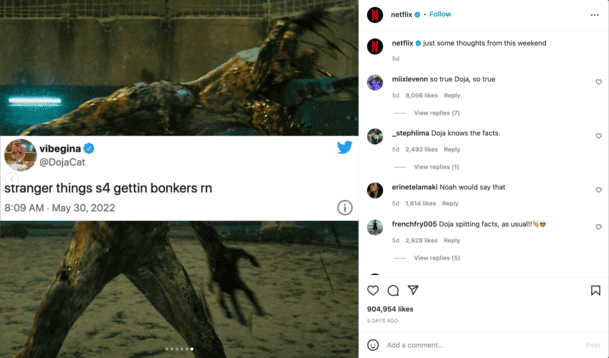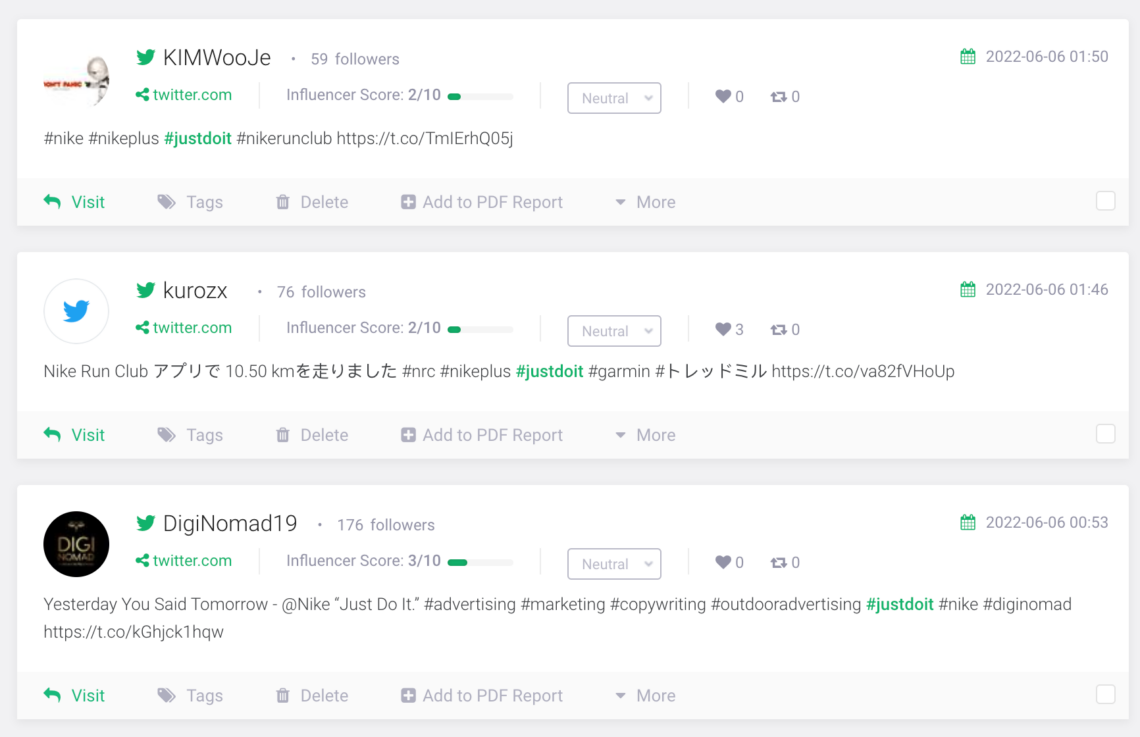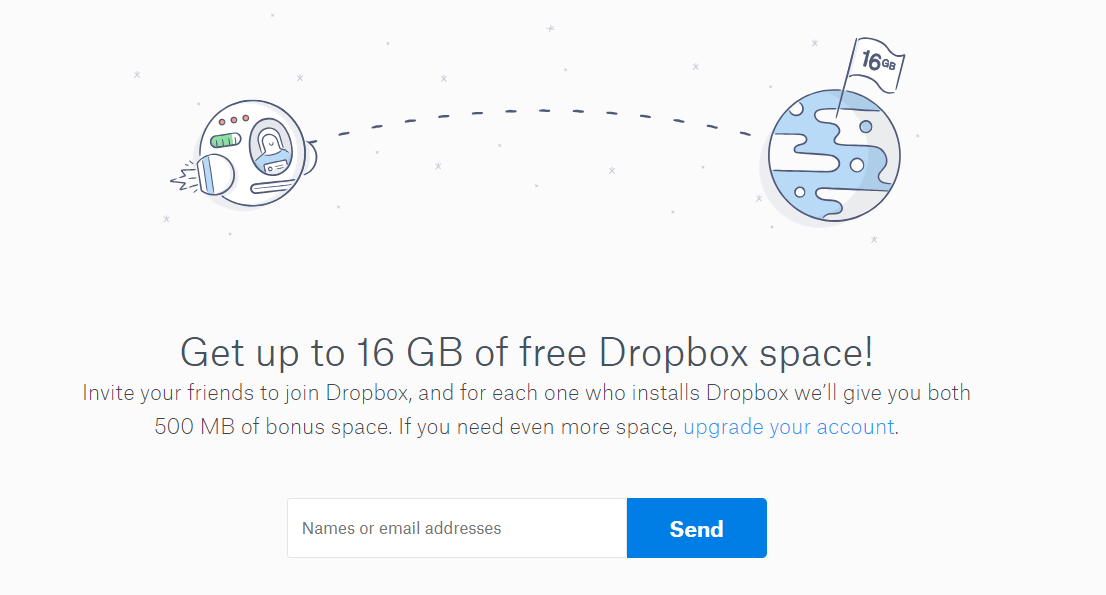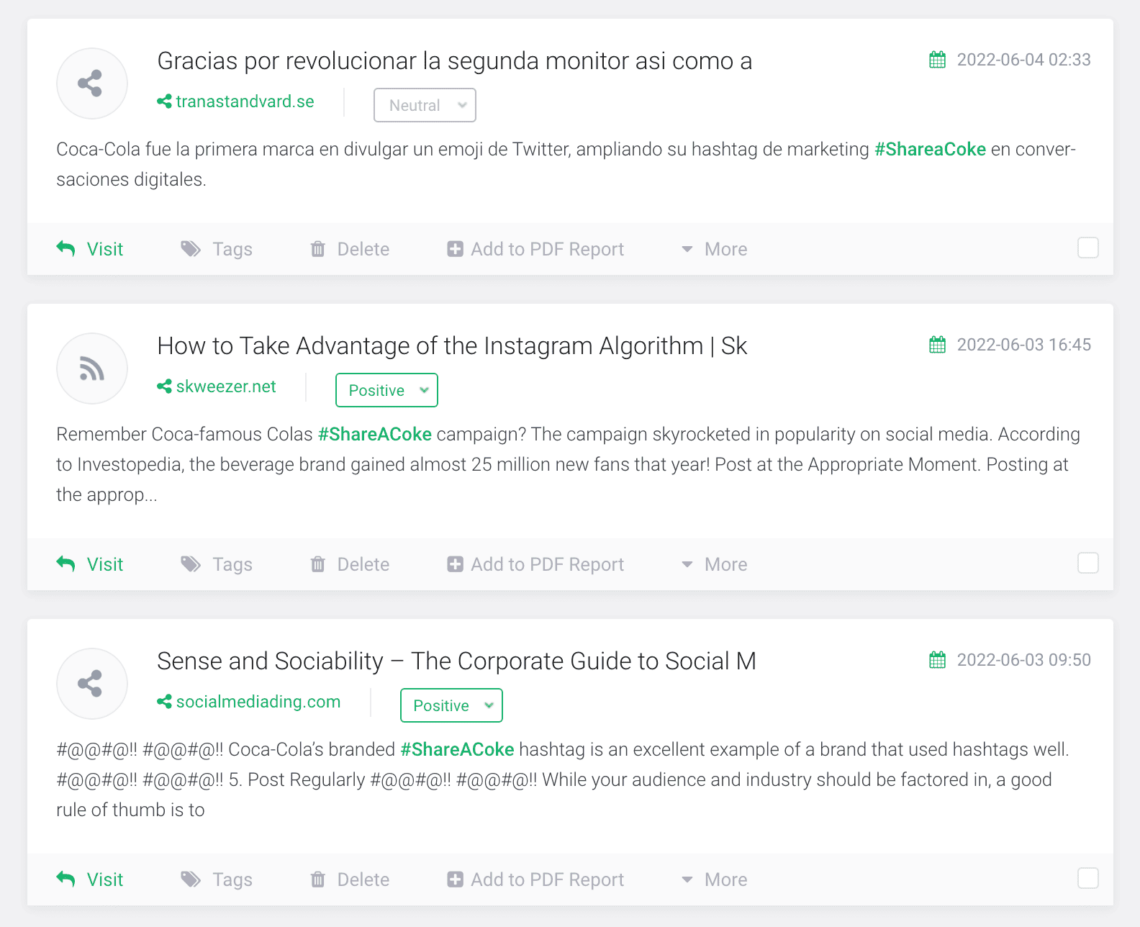Is Word-of-Mouth Marketing the Best Form of Marketing?
Table of contents
I’m sure your marketing strategy includes a lot of channels, but isn’t it a little bit true that one of the most successful forms is word-of-mouth marketing? Today we will focus on the definition, best practices, and tools that can help you with boosting your company’s word-of-mouth marketing strategy.
Let’s face the fact that we are all relying on word-of-mouth recommendations. We are more likely to believe our good friend that the product is reliable and worth buying than base our purchase decision on an advertisement.
Some statistics say that even up to 90% of purchases are influenced by word of mouth. Impressive, right? That’s why in this article, I will tell you a little bit more about word-of-mouth marketing, why it is essential, which tools can help you achieve viral ads, and what else to do to influence your customers.
What is a word-of-mouth marketing strategy?
Word-of-mouth marketing (also known as WOM marketing or WOMM) is a strategy companies use to promote their products and services. The idea behind WOMM is that people are more likely to trust recommendations from friends and family members than advertising.
There are two variants of WOMM:
- Organic word-of-mouth: where consumers share information about products just because they like them.
- Amplified word-of-mouth: where the brand loyalty is boosted by various marketing tactics, such as referral programs or influencer marketing.
As a result, companies focus on creating word-of-mouth buzz by providing their customers with an exceptional product or service experience. This can be done through word-of-mouth marketing campaigns, referral programs, and social media engagement. This marketing tactic can be an extremely effective way to generate new leads and build brand awareness – when done correctly.
Find out who’s talking about your brand. You can try our tool for 14 days for free!
Why is word-of-mouth important in marketing?
Before we find the answer to this question, first, I want you to ask yourself – who do you trust more: corporations or your friends and family?
Say, you are looking for a new car and have a friend who works at a garage – you will probably ask him for recommendations first before speaking to a car dealer.
Word-of-mouth advertising is trustworthy. Because the recommendations, rather from the company itself, come from real customers, it could be forged into a cost-effective form of marketing strategy. But be careful, and don’t be too greedy, because people will spot if a brand ambassador is really loyal to the brand or are they only doing that because they were paid off.
What are the benefits of WOM?
User-generated content should be very valuable to your brand, perhaps even more than your carefully created expensive advertisements. And with WOM marketing, you get a lot of user-generated content.
Here’s a list of benefits of word-of-mouth marketing:
- you build stronger relationships with consumers;
- if your campaign performs well, it’s much cheaper than other marketing strategies;
- it has viral potential;
- makes social proof for your brand;
- WOMM has been proven to increase conversions.
How effective is word-of-mouth marketing?
Some word-of-mouth marketing statistics say that over 20% of people talk about their favorite products with friends or family every day, and almost 80% of us do it at least once a week. That means organic word of mouth does exist, and even if not amplified by the brand, there’s a big chance your customers will recommend your products to their friends (if they like them, of course).
By encouraging organic word-of-mouth marketing, you can boost your sales and gain new customers cost-efficiently.
Word-of-mouth marketing examples
Before you learn how to start your own WOMM strategy, let’s check how other popular brands embraced word-of-mouth and viral marketing.
Netflix
Netflix does a fantastic job of engaging its customers on social media and encouraging organic discussions. I know, it’s much easier for such a big brand than for a small local company, but you should always learn from the best. And Netflix’s social media marketing is always on point.
To actively encourage people to discuss, the streaming giant uses stills from the most popular movies and series, sometimes in a meme format. Their posts gather a considerable amount of users, who comment with their favorite scenes, actors, dialogues, etc. This way, they create social proof and demand for Netflix services.

The example above shows exactly how a word-of-mouth marketing strategy works. Netflix uses other people’s thoughts to promote its services instead of advertising as itself. This post on Instagram just shows various celebrities sharing their thoughts on Stranger Things season 4 – and that’s enough to go viral.
Notice how close WOMM is to influencer marketing. The main difference is that you don’t always need influencers to use WOM marketing.
Nike
Another take on word-of-mouth marketing is to use branded hashtags as Nike does. The famous clothing company uses #JustDoIt to promote its products and, at the same time, encourages loyal customers to use it on social media.

A simple slogan like Nike can encourage user-generated content with the company’s hashtags.
With a clothing company like Nike, branded hashtags are beneficial on Instagram, where you can leverage word-of-mouth marketing in regular (non-influencer) posts showing your products.
Read also: How Effective is Nike’s Social Media Strategy?
Dropbox
Another brilliant example of WOMM is Dropbox’s campaign. It didn’t have as much money for promotion when the company started, so they were forced to use other channels.
They used a referral marketing tactic to drive more traffic and gave 500 MB of extra space in the cloud for recommending Dropbox to other people. This campaign generated a lot of positive buzz around the brand, and customers quickly spread information by word of mouth.

This is a classic word-of-mouth marketing example. Dropbox provides a service, and if you tell your friends about it and they convert too, you get a bonus. And it’s not the company that is advertising directly to new customers, but their existing users are telling other people how good the product is. It’s a win-win.
Coca-Cola
Coca-Cola has a similar case study as Nike. I’m sure you remember the hashtag #ShareACoke and personalized bottles with names.
The idea was brilliant. Coca-Cola started making bottles with their slogan “Share a Coke with” and added popular names so that everybody could get a personalized wrap on their bottle or can. You could either look for your name or gift your friends.
You could even find brand ambassadors at some festivals and other events with a particular machine that would make a customized label on the spot.
Ultimately, the hashtag #ShareACoke became very recognizable, and even though the campaign has almost 10 years now, people are still talking about it.

How to start a WOM campaign?
Now that you know what WOMM is, it’s time to plan your strategy. As you can see from the examples above, there are a lot of takes on word-of-mouth marketing. You can either use a mix of influencer marketing, branded hashtags, and referral traffic – or develop your own approach.
To start WOMM, you need a quality product. Don’t ever think about advertising with WOM techniques if you don’t believe in your work. How should others be certain of your product if you don’t believe in it yourself?
Then, you need triggers: mouth triggers, visual triggers, etc. – anything that will start a conversation. It can be a question, a meme, or something so unique that it gains enough attention that people want to share it via their social media channels. You can use emotional triggers, but be careful with controversies. Excellent examples of emotional stimuli are Christmas advertisements that embrace tradition and appeal to positive emotions.
Encourage user-generated content. A SaaS company can benefit from a case study prepared with a client. A sports brand can ask for photos with their gear put in use. Whatever that will show that consumers trust your brand and actively use your products. This way, it’s not you who is advertising your brand, but regular customers.
Don’t be afraid to ask for reviews and referrals. Your potential customers want to know how the end-users feel about your products, so you need to make sure they can read some positive comments. If you get negative reviews, try to resolve the problem to at least change it to neutral.
Listen to online conversations about your brand. Register for free and start monitoring mentions.
How can I build word-of-mouth advertising on social media?
Encouraging positive customer interaction is a challenging task and can be achieved only if your products are of top quality and you provide amazing customer service.
Amplifying word-of-mouth marketing with weak products can backfire and cause more damage than a positive experience. Or rather – word-of-mouth will spread that your products are of poor quality.
So if you are sure of your products or services, you can start subtly strengthening the WOM on social media by encouraging user-generated content.
How to do that? Here are some word-of-mouth marketing ideas on how you can engage your social media followers to start building your online reputation.
Ask questions. Blunt messages, simple utterances, trivial sentences; they all are too dull for interaction. You may get a few likes, but that’s not enough to spark a conversation. If you ask questions, you show that you listen to your customers and want to know their opinion. And they will love to share what they think. The more comments you can get, the more social proof you gain.
Use humor and memes (if your brand’s tone of voice allows that). These types of messages tend to go viral. But be careful. If you are too coarse, you might lose your credibility. A proper dose of humor will get lots of shares, and people will be happy to relate to your ideas.
Jump in conversations as a brand. Use social selling techniques to find relevant discussions. If you answer in a polite tone and remain helpful, other people will back you up, adding to your social credibility.
Use influencers. Find brand ambassadors in your niche and establish partnerships to have a steady flow of traffic to your site. They will use word-of-mouth recommendations to share your products with their followers. Be sure that they can incorporate a natural language when advertising products; in another case, the followers will quickly realize this is a paid ad. The best partnerships are not based on money but on brand loyalty.
Similar types of marketing strategies
As I mentioned before, the closest tactics to WOMM are influencer and referral marketing.
Influencer marketing uses famous people (they don’t necessarily have to be celebrities, some micro-influencers can also give you a lot of valuable organic word of mouth) to advertise products and ideas. They will tag you on social media and share info about your brand with their followers. A continuous partnership can grow great brand ambassadors.
Read more: What is influencer marketing?
Referral marketing is an approach that uses a word-of-mouth strategy to inform other people about your products or services. In return, they get some bonuses. A great example of referral marketing is Uber – by recommending the app, you get free credits for rides.
Read more: How Referral Marketing Can Do Wonders For Your Small Business Brand
There’s also viral marketing, which is actually another type of WOM marketing. Virals are hard to force and require a very elaborate or specific element. They usually occur naturally because the advertisement is so good or unique that everybody starts talking about it.
Combining word-of-mouth and referral marketing
Referral marketing goes in pair with WOMM. These two strategies combined can give you a lot of valuable traffic and conversions.
Think of what you can offer your new customers as a free gift. This doesn’t need to be anything potentially significant – Dropbox gave away 500 MB, which nowadays doesn’t seem a lot, but it can hold hundreds of photos or PDFs.
Try word-of-mouth marketing with Brand24
Measuring your word-of-mouth campaigns is crucial to determine if they are successful or not. You need the right tool to monitor the web for your brand mentions and context analysis.
Why not try Brand24?
Brand24 is a media monitoring tool that tracks your brand mentions across the web and provides thorough analytics and can be super helpful when introducing the word-of-mouth strategy.
14-day trial and no card required. Try our media monitoring tool for free!
If you don’t use media monitoring, you cannot say if your word-of-mouth marketing works. You can try our tool for 14 days for free (no credit card required). For your first project, I recommend setting up monitoring of your branded keywords. This way, you will be able to track real conversations about your business, perform deep sentiment analysis, and discover the context of discussions.
Complete your WOM advertising with the right tool and get insights into what your loyal customers think about your brand.
FAQ
What is word of mouth in marketing?
Word of mouth in marketing refers to the process by which consumers share their opinions, experiences, and recommendations about a product, service, or brand with their friends, family, social networks, and social media platforms. This type of marketing relies on people’s natural tendency to discuss their experiences and preferences, leading to increased brand awareness, trust, and potentially higher sales.
Why is word-of-mouth effective?
Word-of-mouth marketing is effective for several reasons, particularly in the context of social media sites. Some key factors that contribute to its effectiveness include:
- Trust: People tend to trust recommendations from friends, family, and acquaintances more than advertisements or promotional content from brands. This trust factor makes word-of-mouth marketing particularly powerful, as consumers are more likely to try a product or service based on a personal recommendation.
- Authenticity: Word-of-mouth marketing often involves genuine, unsolicited opinions and experiences shared by consumers. This authenticity can be persuasive, as it demonstrates that real people have tried and liked the product or service, making others more likely to give it a try.
- Virality: Social media sites enable word-of-mouth marketing to spread quickly and reach a large audience. As people share their positive experiences or recommendations, their followers may also share the information, amplifying the message and potentially creating a viral effect.
- Cost-effective: Compared to traditional advertising campaigns, word-of-mouth marketing can be a cost-effective way to generate awareness and interest in a product or service. Brands can leverage the power of social media and user-generated content to create buzz without incurring substantial advertising expenses.
- Increased customer loyalty: When consumers have positive experiences with a product or service and share them with their network, they are more likely to become loyal customers. This loyalty can lead to repeat business and more word-of-mouth recommendations, creating a cycle of growth for the brand.
To take advantage of the benefits of word-of-mouth marketing, brands can create campaigns that encourage customers to share their experiences on social media sites. This can include offering incentives for reviews, engaging with customers online, and creating shareable content that showcases the brand’s values and products.
Is word-of-mouth the best advertising? What is the best form of marketing?
Word-of-mouth marketing is often considered one of the most effective forms of advertising due to its trustworthiness, authenticity, and the power of personal recommendations. While it may not be the best form of advertising for every business or in every situation, it does offer significant benefits that can contribute to its success.
Some word-of-mouth marketing statistics that showcase its effectiveness include:
- According to a Nielsen study, 83% of consumers trust recommendations from friends and family more than any other form of advertising.
- A study conducted by the Word of Mouth Marketing Association (WOMMA) found that word-of-mouth marketing drives up to 13% of consumer sales.
- Research by HubSpot indicates that 71% of people are more likely to make a purchase based on social media referrals.
While these statistics highlight the potential effectiveness of word-of-mouth marketing, it’s essential to note that the success of any advertising strategy depends on several factors, such as the target audience, the product or service being offered, and the overall marketing mix.
To maximize the benefits of word-of-mouth advertising, businesses should combine it with other marketing strategies, such as social media marketing, content marketing, and traditional advertising methods. This approach will help ensure a comprehensive and well-rounded marketing campaign that effectively reaches and engages the target audience.

